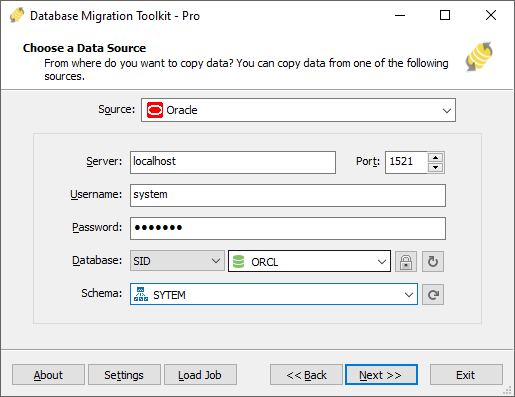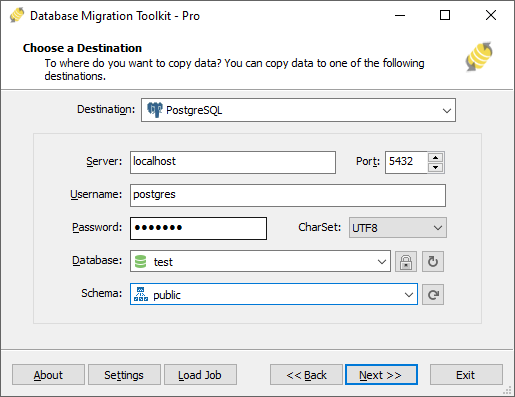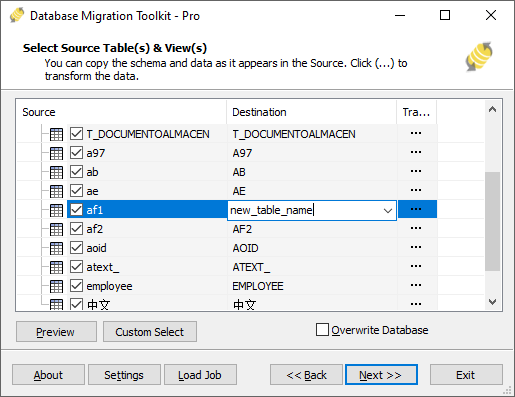Migrating data from Oracle to PostgreSQL
This guide will show you how to easily migrate data from Oracle to PostgreSQL through a few simple steps with ESF Database Migration Toolkit, simplifying the complex migration processes and saving you valuable time.
Oracle vs. PostgreSQL:
- Oracle is a leading multinational computer technology corporation specializing in database management systems. Renowned for its robust and scalable database solutions, Oracle offers a comprehensive suite of products encompassing database technologies, cloud applications, and enterprise software. With a global presence and a reputation for innovation, Oracle serves diverse industries including finance, healthcare, retail, and manufacturing, empowering organizations to manage, secure, and analyze their data efficiently to drive business success.
- PostgreSQL is a powerful, open-source relational database management system known for its reliability, robust feature set, and extensibility. It offers support for a wide range of data types, indexing techniques, and advanced features such as full-text search, JSON support, and geospatial data processing. With a strong emphasis on standards compliance and ACID compliance, PostgreSQL is widely used across various industries for handling complex data management tasks, from small-scale projects to large-scale enterprise applications. Its active community, frequent updates, and ecosystem of extensions contribute to its popularity and ongoing development.
Prerequisite:
Software Required:
DMToolkit_x64.zip
(63.5 MiB)64-bit Windows application for ESF Database Migration Toolkit 12.2.07 (2025-07-01).
(md5: 0750355677f7108916a6c1f2bc0d4d87)DMToolkit_win32.zip
(58.9 MiB)32-bit Windows application for ESF Database Migration Toolkit 12.2.07 (2025-07-01).
(md5: a9ba6351d787ff958b4ff2d9ca888576)System Supported:
- Windows 7 or higher.
- Oracle 11g or higher.
- PostgreSQL 7.x or higher.
Step by Step Wizard:
-
In "Choose a Data Source" dialog, choose "Oracle";
- Enter the server name (default: localhost) and port (default: 1521).
- Enter the username (default: "system") and its password.
- Choose the logon method (SID, Service_Name or TNS).
- Enter the Oracle SID or Service_Name in the "Database" field or leave it empty if you're using TNS method.
- Enter the schema name or leave it empty (default is the same as the username). You can press the "Refresh" button to view a list of all schemas.

-
In "Choose a Destination" dialog, choose "PostgreSQL";
- Input the server name (default: localhost) and port (default: 5432).
- Input the username (default is "postgres") and its password.
- Select the target database character set (default is "UTF8"), it's important if the data contains non-ASCII characters e.g. German, French, Japanese.
- Select an existing database or input a new database name (click the 'Refresh' button to list all databases). If the target database does not exist, this tool will automatically create it during the migration process.
- Input/select the target PostgreSQL schema name (default is "public"), or press "Refresh Schema" button to list all schemas.

-
In "Select source Tables(s) & View(s)" dialog;
- Select the tables or views you want to migrate.

- You can access the table options or adjust the table structure by clicking the "..." button.

- In the "Field Mapping" option, you can customize the destination table's fields, such as field name, data type, default value, comment, and more. You also have the option to choose the data transfer method, including Overwrite Table, Empty Data, Append Data, or Skip Table, or even filter the data before transferring it.
- Select the tables or views you want to migrate.
-
In "Execution" Dialog;
- You can start the migration process by clicking "Submit". The toolkit will efficiently and seamlessly migrate your data from Oracle to PostgreSQL without the need for manual intervention.

- To keep track of the migration process, you can access the full migration log by clicking "Browse Log". This will provide you with a comprehensive view of the entire migration, including any potential issues and their resolutions.
- To save time in the future, you can save the migration settings as a job file by clicking "Save as job". This allows you to quickly reload the migration job at a later time or run the migration job using the command-prompt by typing "dmtc.exe --help". The command-prompt provides you with a full list of parameters to customize the migration process to your specific needs.
- You can start the migration process by clicking "Submit". The toolkit will efficiently and seamlessly migrate your data from Oracle to PostgreSQL without the need for manual intervention.
-
Finished!
Upon completion, the toolkit will generate a comprehensive migration report, providing you with all the information you need to verify the accuracy and completeness of the migration process. So, you can sit back and relax while the program carries out the task efficiently. Should you have any inquiries or recommendations, don't hesitate to reach out to us. We're always happy to help.